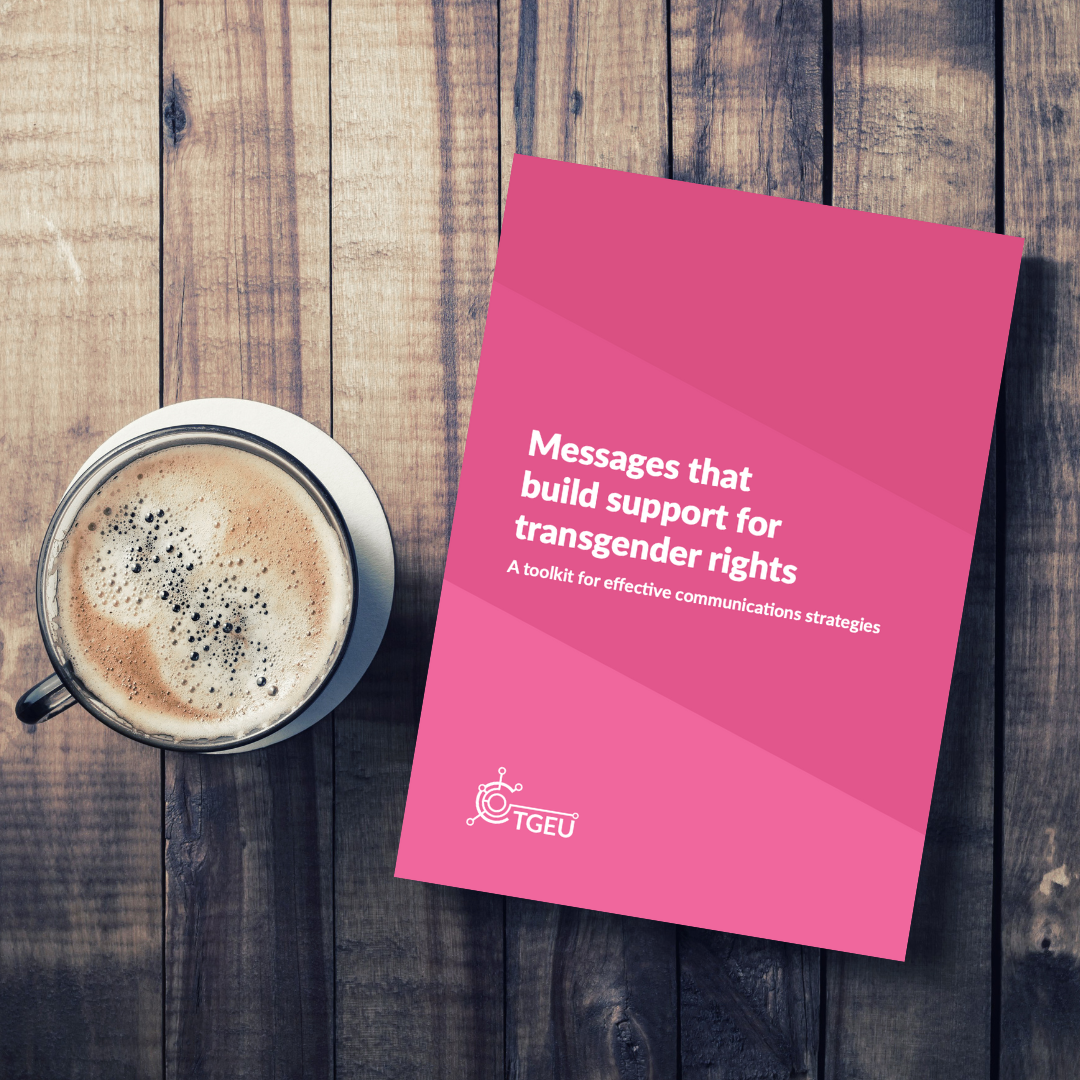Messages That Build Support for Transgender Rights: A Toolkit for Effective Communication Strategies

Most people lack adequate information about trans people. They do not have any reference points to understand the lives and challenges of trans people. For example, only 2-29% of the general public knows someone who is trans. Meanwhile, 82% know someone who is gay, lesbian, or bisexual.
This means there is often an absence of accurate information. Anti-trans actors target this audience with misinformation. The anti-gender and anti-trans movements rely on complex communications strategies. They are highly organised and well-funded.
There are concerted efforts to counter this. But, there is a clear knowledge gap. This toolkit covers strategies that trans activists and allies can use. They lay out how to educate people in a way that fosters support for trans rights. These strategies can be applied to campaigns, like political campaigns before a law will be voted on.
How can transgender activists and allies use these communication strategies?
The communication strategies in this toolkit are geared at educating the ‘moveable middle’ about trans people. The moveable middle refers to populations who do not already hold a strong opinion on a topic, in this case, trans rights.
The communication strategies we cover recognise that language around trans activism can alienate these audiences. This toolkit provides an overview of how to develop messages, with concrete goals and audiences in mind. It also lays out several tested communication strategies, and how to use them.
What communications strategies does this toolkit cover?
This toolkit includes two communications approaches:
- The Heartwired Approach – this approach relies on psychology. It uses a person’s existing values to help them learn about and understand trans lives and experiences.
- Race Class Gender Narrative – this approach seeks to reach the moveable middle without alienating existing supporters. It specifically builds on alliances across and between race, class, and gender movements.
Both approaches tested positively with the ‘moveable middle’. They also both focus on using simple language and introducing new ideas about gender slowly.
Clear examples of narratives and messages are included for each approach.
What other resources are included?
Both approaches tested positively with the ‘moveable middle’. They also both focus on using simple language and introducing new ideas about gender slowly.
Clear examples of narratives and messages are included for each approach.
How can I get a copy?
If you would like to receive a copy of this publication, please email comms@tgeu.org. Include ‘Request: Messages that Build Support’ in the subject line.